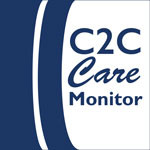Tyvek and sprinklers?
Tagged: ethafoam, sprinkler, Tyvek, water damage
- This topic has 5 replies, 3 voices, and was last updated 8 years, 7 months ago by
 William Lull.
William Lull.
-
AuthorPosts
-
-
July 9, 2015 at 2:01 pm #133971
Marya Van't Hul
ParticipantOur local history museum is required to install building-wide sprinklers as part of a smaller renovation. Our 3D artifact storage is currently on open shelving with dust cloths. Should we do something to protect the artifacts from water damage in case sprinklers are activated?
We thought of using either ethafoam or Tyvek to cover the tops of the shelving units Is regular Home Depot Tyvek the same thing as the more expensive museum supply version? We have no budget….
Thanks for any advice.
-
July 10, 2015 at 1:13 pm #133973
 Sara LevinParticipant
Sara LevinParticipantDear Marya,
Thank you for your post, and good question. I am one of the monitors for the site, and I hope I can help with your concern.
I imagine the two most important things to consider are keeping your objects from being damaged either by water/dust, or by an accident during the renovations such as a tool falling, or ladder knocking into things, etc. Roughly how big is your storage unit, with how many objects? If not too many objects, perhaps they can simply be moved to another location while the renovation is taking place? If not possible or practical, however, to keep objects safe from water and dust I believe a good option would be to drape the shelving units (covering the tops and any open sides) with plastic polyethylene sheets, which will prevent water from coming through. This will be a cheaper option than purchasing Tyvek or ethafoam, which may not be necessary unless the barrier must rest directly on the object. House Wrap Tyvek is also a reasonable option, as it would allow a “breathable” barrier, but it more relatively expensive. I believe the type they sell at Home Depot is will suffice, though I have not researched it. The only concern I can foresee with using polyethylene plastic sheets is creating a micro-environment inside them that may trap humidity inside. Therefore, it would be best to not seal the shelves in plastic, but to allow air to circulate.
Another suggestion, if you have metal shelving could be to use magnets to hold the waterproofing material in place, one place to purchase them is https://www.kjmagnetics.com/ which I am told has a wide variety of rare-earth magnets, discounts, and have fast shipping. The additional concern is the safety of your objects while a renovation is going on, and keeping them safe from non-museum employees /tools, etc. while people are working in the area. I would make sure no objects are near the very edges of the shelves to prevent people from knocking into them, and that aisles are kept clear to prevent hazards like tripping. If you think that vibrations from the renovations will be a hazard, you may want to install bumpers around the perimeters of the shelves (made of ethafoam or netting for example) so that if there are vibrations objects do not “walk” off the shelves.
I hope this is helpful. Please let me know if you have any additional questions.Plastic sheeting can be purchased at home depot: http://www.homedepot.com/p/Husky-10-ft-x-25-ft-Clear-3-5-mil-Polyethylene-Sheeting-RSHK3510-25C-U/100651793
Sara Levin
-
July 10, 2015 at 3:02 pm #133974
Marya Van't Hul
ParticipantThanks, Sara. Protecting or moving the artifacts during renovation is a separate (major) problem. I am mainly wondering whether it is standard to protect stored items from water if the sprinklers were to go off, and if so, what to use. Thanks for the plastic sheeting and magnet suggestions. If I understand you, you don’t think there is anything about regular Tyvek that is hazardous to artifacts, even long-term, provided it doesn’t touch them?
-
July 10, 2015 at 3:39 pm #133975
 Sara LevinParticipant
Sara LevinParticipantHi Marya, As Tyvek is a trademarked product, and is safe in direct contact with most objects, the product under the same name sold at Home Depot I think should be the same. I meant it may not be a good idea to have the polyethylene plastic in direct contact with all objects because of the possibility of trapping moisture. Perhaps you could send a link to the two Tyvek products you are comparing so we could have a better idea if there is a difference?
-
July 13, 2015 at 6:30 pm #133989
 Sara LevinParticipant
Sara LevinParticipantHello again, after looking at the information about Tyvek on websites for museum grade archival material, it seems the major difference in price is due to the grade of Tyvek and the softness/texture desired. If looking to have the barrier in direct contact with artifacts, this may be important. If the barrier will only be in contact with shelving units, I imagine the texture will not be as important and that a less fine grade could be used such as that which is meant for house/lumbar wrapping etc.
-
September 25, 2015 at 12:35 am #134127
 William LullParticipant
William LullParticipantYou might want to give some attention to the fire rating of what you use. As it turns out Tyvek burns rather nicely as does most polyethylene sheeting.
I had a library client who had covered their collections with polyethylene sheeting to protect from some welding work on a dumbwaiter in storage. A single spark set off the sheeting which ALL burned with smoke and black soot everywhere.
Suggest that you look for something with a low “flame spread” and “smoke developed.” I usually recommend Gryffolyn TX1200FR (FR = fire resistant). (It also is a great UV filter! Tyvek only attenuates UV the extent to which the light is reduced.) If you call them and tell them you are an end-user, not a contractor, they will drop ship a roll to you.
http://www.reefindustries.com/assets/pdf/tx1200fr.pdfSuggest that you get a lighter and go outside with some 1″ x 6″ sample strips of whatever you are thinking of using, and some pliers to hold the sample, and see how well it burns. Here is a little video I made of burning Tyvek: http://1drv.ms/1jgmdrs
Good luck!
-
-
AuthorPosts
- The forum ‘Connecting to Collections Care Forum Archives – 2015 through 2018’ is closed to new topics and replies.




